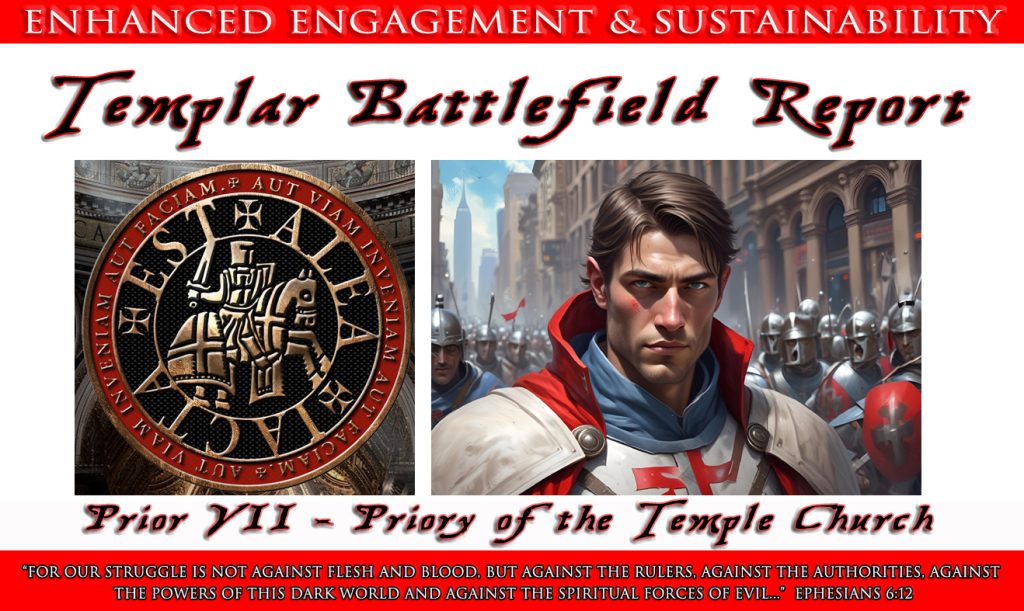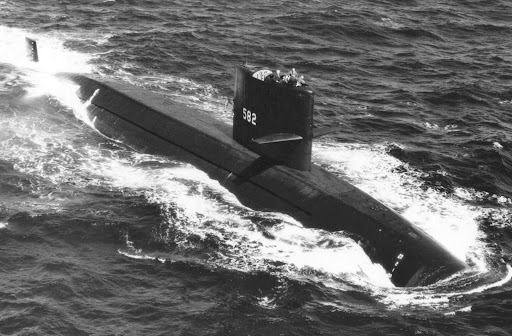
I found myself in a very unique niche in my early Naval years. At one point in 1975, I was awaiting orders to Officer Candidate School as an enlisted Quartermaster working for the Commander of Pearl Harbor Naval Station. He was doing everything he could to make a Mustang Officer out of me and, while I was waiting, he gave me very compelling assignment.
Knowing that at that time I was intending to become a submariner, I was to select any submarine in Pearl Harbor, and he would call the CO and set me up with temporary duty onboard. While I had planned that my future boat would be nuclear powered, I wanted to be sure and ride a diesel boat while there were still a few remaining in service. So, I selected the USS Bonefish, SS-582 (shown below).

The Bonefish was returning to service after a stint in the Pearl Harbor Naval shipyard. Its crew of 77 men were preparing for sea trials to confirm the boat’s readiness and it was a perfect opportunity for me to tag along and get a taste of the submariner life. Due to my previous training, I was assigned to the boat’s Chief Quartermaster (navigator) for these tests.
I will never forget that morning – my first submarine duty in a future submarine career that I very much looked forward to. I was unaware at that time that my Naval course in OCS would ultimately change to Engineer and Navigator on surface ships. But, on that day, I was excited to begin a new experience. The Chief led me down the ladder to the crowded but very, very impressive bridge of this World War II veteran boat.
As soon as we arrived at the navigator’s plotting table, he stopped, looked me in the eyes, and deliberately held my gaze for several silent moments to get my attention. Then he directed me, “You do whatever I tell you – instantly. No matter what I tell you, do it. Just do it immediately. Did you hear me, Petty Officer Chamberland?”
I nodded my head rigidly, my eyes wide and reflecting my nervousness. “Yes, sir!” I hastily responded clumsily.
And then, reflecting the age-old banter of enlisted personnel in all military branches, he barked, “Don’t call me sir, Chamberland – my parents were married!” A wry smile creased his mouth as he deliberately spoke loud enough for everyone on the bridge to plainly hear.
About an hour later, the Bonefish was securely attached to the harbor tug that began to pull us out into the Pearl Harbor channel, headed north around Ford Island, and finally winding around to due south out to Hotel Papa – the last buoy out of the harbor and into the open Pacific.
The Skipper was crisply barking orders to the crew as the diesel engines ramped up the vibrations of the steel decks under my feet.
Suddenly, there was a thunderous woosh accompanied by a sharp vibration and a muffled “thump.”
The Chief did not even look up from the plotting table at my face to know that I was alarmed by the unfamiliar sounds. “It’s the torpedo tube tests. After our visit to the shipyard, we have to test them on the surface with slugs of compressed air. If anything goes wrong on the surface, it’s no big deal. But if it goes wrong at cruising depth, it’s a long way to the bottom off Hawaii…”
“Good idea,” I whispered to myself anxiously even though I was bursting with excitement at my first submariner experience.
“After these tubes pass the air tests, we’ll fire a test fish when we get out there and reach depth,” he said describing the actual torpedo trial to be conducted when we finally submerged.
In the next few minutes, I heard two more torpedo tubes cycle. Then my excitement was totally replaced by another feeling altogether.
Instead of “woosh-vibration-thump,” instead there was a “woosh-vibration-BANG-SHUDDER!”
Not wanting to display newbie ignorance once again to blatantly confirm my inexperience, I quickly looked from the plotting table to the chief for reassurance – just as the casualty alarms began to sound.
The Officer of the Deck was shouting orders, and everyone was responding with obvious focused intensity.
Realizing this was not just another routine occurrence onboard, I instinctively whispered a simple two-word phrase (omitted on this family friendly page).
Then I could not breathe – literally.
I inhaled and my lungs locked up.
Then my eyes stung and began to burn.
I immediately looked at the Chief for orders.
“Get out! Get out! Get out!” he commanded while donning his gas mask.
I had never been on a submarine before this trip on the Bonefish. But somehow, I remembered exactly where the ladder was that led up and onto the deck. Miraculously, another sailor and I both managed to squeeze out of a hatch made for one at the same time, others close on our heels.
I climbed onto the deck of the Bonefish gulping in lungful after delicious lungful of the fresh Hawaiian air. My eyes were watering and I was shivering, not only from the cool island breeze but with an adrenaline rush.
I did not know a single man on that black, narrow deck that morning. But I could hear the casualty report on the deck speakers. A torpedo door latch failed under pressure and sprung open, slamming backward. The immense force impacted on a canister of lithium hydroxide (LiOH) emergency CO2 absorbent mounted to the adjacent wall. The energy of the door’s collision instantly vaporized and atomized the extremely dangerous powder in the torpedo room. Intakes for the very effective submarine ventilation system immediately captured the vapor and instantly circulated it throughout the boat.
Meanwhile, the torpedo compartment began to flood because, although the deck of the boat was above the water, the tube doors were under the surface. But the well-trained crew responded expertly, and soon the hatches were sealed, the compartment pumped out, and the harbor tugs were returning to bring us back into our berth.
Several torpedo room sailors who had been close to the casualty were covered with the very caustic LiOH dust. It burned their exposed, damp skin on contact. Their situation was serious, and they were immediately washed down on deck with fire hoses to flush the caustic chemicals off them.
Soon the tugs arrived to take the injured sailors on board and transport them to the ambulances awaiting pier-side. Because of the hectic emergency atmosphere and my now short-lived temporary duty assignment, I never discovered the full extent of the men’s ultimate injuries.
But over the years I have pondered many times what would have happened if anyone had skipped or forgotten or carelessly overlooked just one single protocol. A flood from a wide-open torpedo tube is one thing when you are on the surface – but at cruising depth, no one comes home from that casualty. It was a lesson I took very seriously and carried into my career as a Naval Officer, engineer, and navigator, in addition to my careers as a US Navy Civilian Nuclear Engineer, a Nasa Safety Specialist, and a NASA Life Sciences Engineer, and throughout my life.
Life is not just about attention to detail. It is about consciously connecting the dots from the procedures page to the human lives that absolutely, totally depend on the professional doing the right thing at the right time – just one simple little step that separates 77 men from death on the abyssal ocean floor.
Being a Templar is no less reliant on a careful knowledge of and adherence to protocols and details. In fact, it is even more so! For it is our solemn duty and commitment to the Master and Creator of the Universe that we will perform our jobs focusing on the really big picture – with eternity in mind. 77 men losing their lives is a loss of about a total of 6,000 life-years. But just one single person missing the opportunity for eternal life with Christ is the loss of an infinite number of years! As Templars, we are squarely in the middle of that process.
Right now, in the Holy Land, there are Christian families at risk who are totally and wholly dependent on 21st century Templars to carefully consider their plight and do what we are called to do, with thorough attention to the details. Those families of today and their families of the future are invariably linked to our professional conduct and to our careful adherence to our processes and procedures, and to us conscientiously considering their plight as real and personal, with a full understanding of the scope and responsibility that we hold. Anything less is a dereliction of our duty to them and to the Eternal Kingdom which we represent.
In GPUSA, the casualty alarms sounded when the Orthodox School for Girls was attacked, and we were ready and did a miraculous job of making things right. But in a less immediately dramatic way, we can each make a daily difference – indeed, an eternal difference – by paying our mite, by adding to and multiplying our offerings, and by supporting a scholarship for a Christian student, that, by extension, assists a whole family or even families.
Fellow Templar, it is why we were called. It is why we exist. To stand between the Christians at risk in the land of the Holy One and evil in all the empty places that they must walk. We are the ones who stand in the gap…
Because we have been trained, we have been disciplined, and we and know what we are doing… and why we do it.
___________________
“For God has not given us a spirit of fear; but of power, and of love, and of discipline.”
2 Timorthy 1:7
